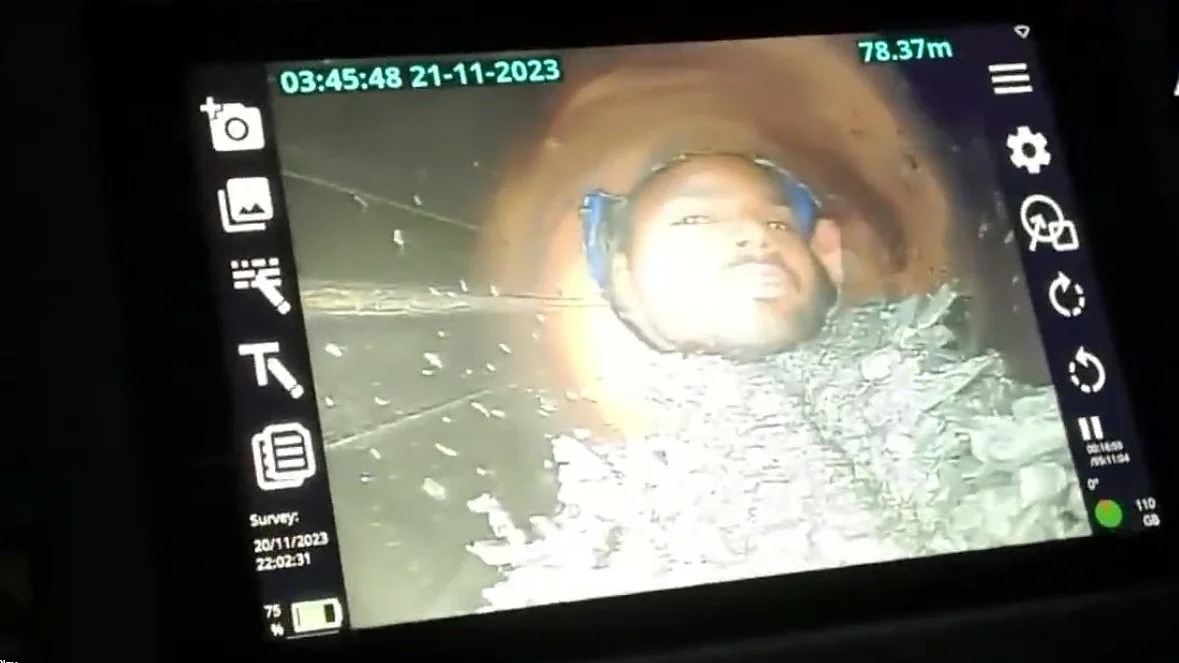Uttarkashi: First tunnel visuals emerge. PLUS: What are the 5 plans to evacuate trapped workers?
A multi-pronged, multi-agency operation is underway to free the labourers, who have now been trapped inside the incomplete Silkyara tunnel for the past 10 days

In a recent update on the Uttarkashi tunnel collapse, rescuers shared the first video footage of the labourers who have been trapped inside the Silkyara tunnel for the past 10 days.
An endoscopic camera, sent through a 6-inch pipeline put in to deliver food and essential supplies, recorded visuals of the trapped workers.
The footage showed the workers, still in their yellow and white helmets, receiving food items delivered through the pipeline and interacting with the rescue teams.
They all seemed to be in relatively good health, which could offer a bit of welcome relief to anxious families, friends and well-wishers across the nation following their painful story.
The ongoing efforts to rescue the trapped workers in the Silkyara tunnel involve multiple agencies, including international experts, and a five-point plan with alternatives and safeguards factored in:
1. Vertical tunnel (ONGC, the Oil and Natural Gas Corporation): ONGC is mobilising machinery from Ghaziabad, Mumbai and the US to build a vertical tunnel at the 2.3km mark, where the tunnel is already complete from the Silkyara side. The tunnel's depth will be approximately 325 metres.
2. Horizontal boring from Silkyara end (NHIDCL, the National Highways and Infrastructure Development Corp Ltd): NHIDCL is employing an American boring machine to perform horizontal boring from the Silkyara end, where the debris is located. The operation ran into a temporary snag as the machine hit debris and a replacement had to be requested. The objective here is to create an alternative route to the vertical tunnel.
3. Another vertical rescue tunnel (Satluj Jal Vidyut Nigam): Satluj is responsible for vertically digging a 1.2 m-wide hole into the tunnel. This process requires approximately 90 metres of digging and will intersect with the existing tunnel at the 320m mark from the Silkyara side. The Border Roads Organisation has prepared an access road for this operation already, which took a day.
4. Horizontal micro-drilling from the side (RVNL, Rail Vikas Nigam Ltd): RVNL is conducting horizontal micro-drilling from the left side of the tunnel. This innovative approach not only aids in the current evacuation but will also serves as a potentially life-saving escape route for the future. This tunnel will be 1.2m wide and 168m long, and will meet the existing tunnel at around the 300m mark from the Silkyara side.
5. Rescue Tunnel Construction from Barkot end (THDC, Tehri Hydro Development Corporation): THDC has begun construction of a rescue tunnel from the Barkot end, using the conventional drill-and-blast method employed for the original tunnel too. Unlike the existing tunnel, however, this rescue tunnel will have a smaller diameter. It requires approximately 483 metres of digging.
Follow us on: Facebook, Twitter, Google News, Instagram
Join our official telegram channel (@nationalherald) and stay updated with the latest headlines
